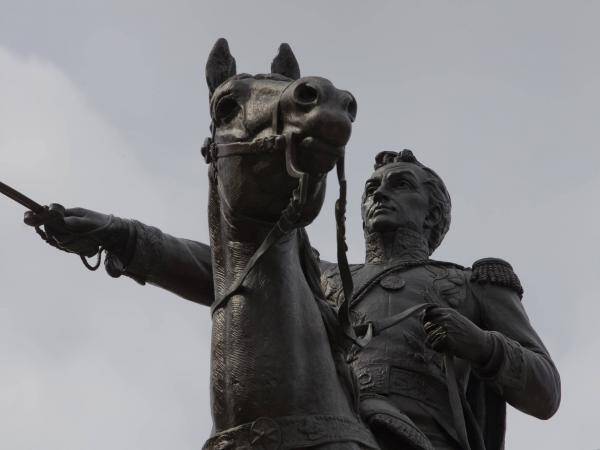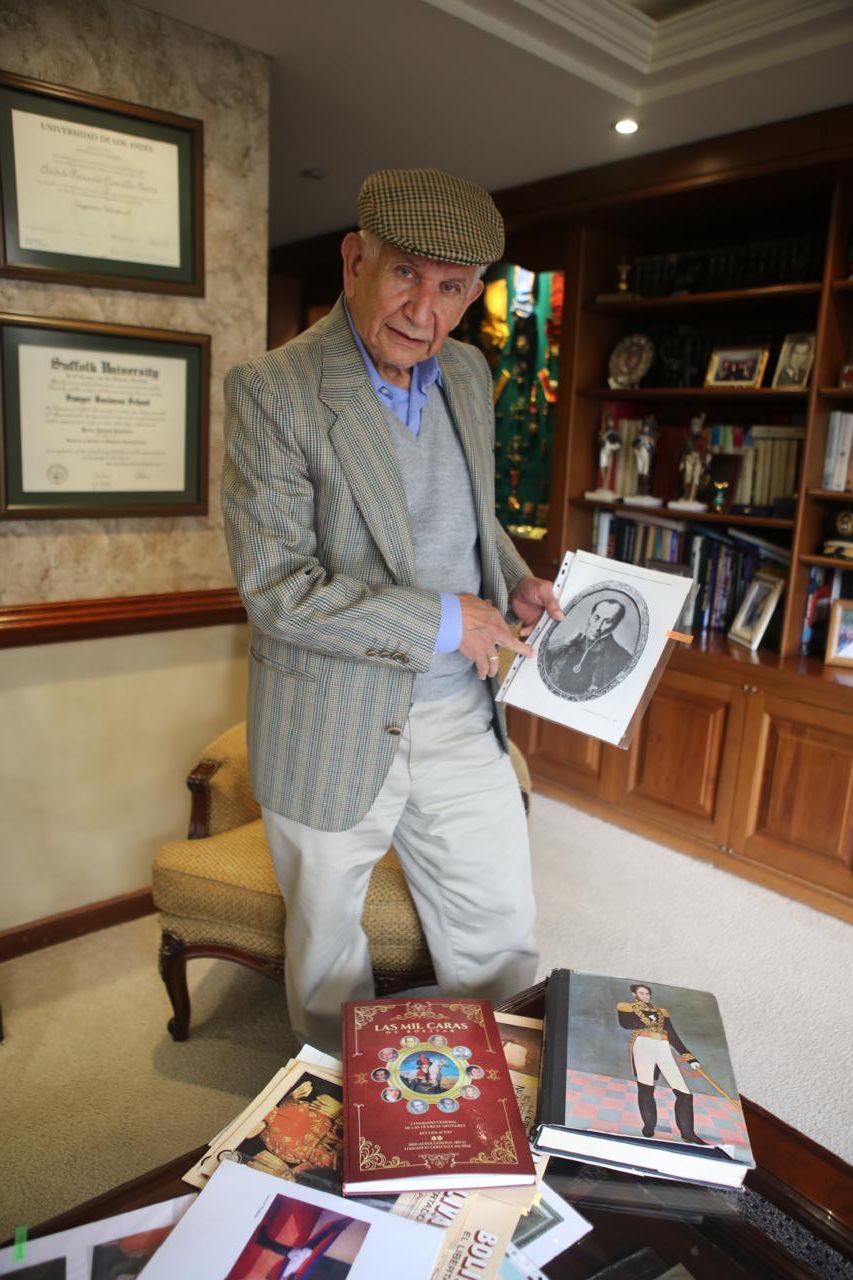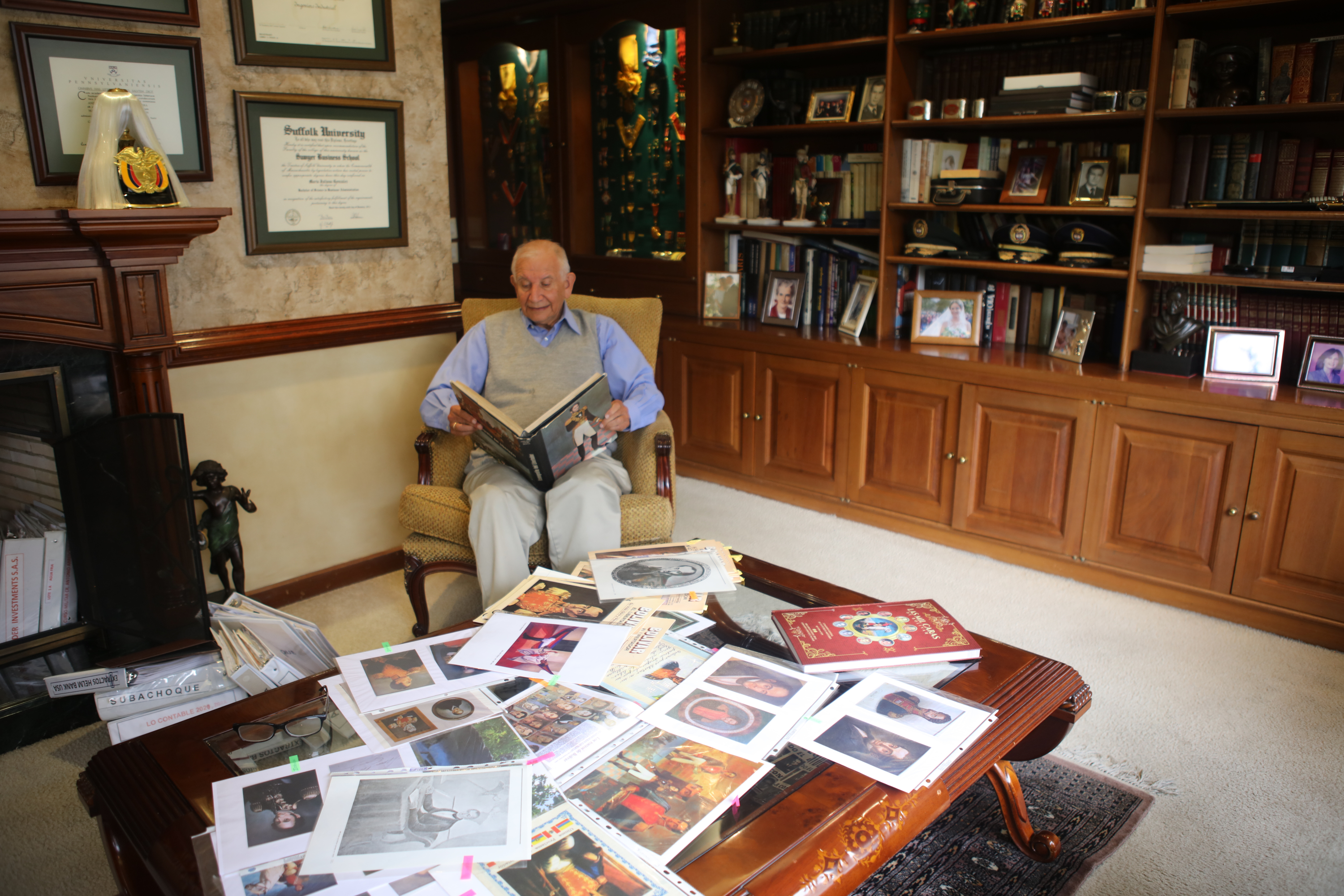'The Thousand Faces of Bolívar': The Story of the Book That Reconstructs the Liberator from the Image

In the intimacy of forgotten libraries and the dusty shelves of village bookstores, one of the most unusual and enduring publishing projects dedicated to the figure of Simón Bolívar was born. It is The Thousand Faces of Bolívar, a work conceived by retired General Fernando González Muñoz, a renowned voice in the military sphere, but now also a chronicler of the Liberator's many visual representations.
The text offers a visual exploration of the face of the man who led the emancipatory struggle in Latin America , while constructing a parallel narrative about the perseverance of its author.

Simón Bolívar was known as "The Liberator." Photo: Vanexa Romero
Through eight chapters, the work covers the life stages of the hero: from his youth in Caracas to his old age marked by illness and exile. But its focus is not a conventional biography. Its purpose, according to the author, is to trace the changing image of Bolívar in art, illustration, sculpture, and painting over the course of two centuries. The idea arose, according to González Muñoz, from an episode that occurred in his childhood, when his father told him a story about Palomo, the Liberator's mythical white horse, while they were walking together along a path in old Caldas. That seemingly trivial moment planted in his memory the seed of a devotion that would grow over the years.
For decades, González Muñoz collected illustrations, portraits, sculptures, engravings, and every form of artistic expression that immortalized Bolívar. The search became an essential part of his routine. During his days as a serving officer, he would take time away from his duties to explore antique markets, public archives, or marginal bookstores, where he often found forgotten treasures. In total, he managed to gather more than 250 pieces, which today reside in his personal library as witnesses to a passion sustained against all odds.
Despite his dedication, the road to the book's publication was not easy. For more than thirty years, General González Muñoz experienced a series of frustrations related to his attempt to bring his work to life. In 1990, while on an official mission in Arauca, he received an offer from a neighboring country seeking to acquire the rights to the manuscript. The proposal was immediately rejected, as, for the author, giving away the fruits of his labor was equivalent to surrendering a part of his identity.
The project resurfaced in 2018, when Andrés Luis Rojas, then vice president of Pacific Rubiales, expressed interest in funding a deluxe edition of the work. The initiative was presented to the company's board of directors, but a change of administration in 2020 ended the sponsorship before the publishing plan could be finalized. The situation was repeated with the Academy of Military History, which attempted to include the work in the Golden Book of the Colombian Military. However, administrative procedures and institutional delays meant that this new opportunity was also put on hold.

Fernando González has dedicated himself to collecting illustrations to immortalize Bolívar. Photo: Courtesy of Fernando González
A new impetus came in 2023 from the Military Cadet School, under the direction of General Luis Fernando Salgado Romero. This time, support was strong, but resources were scarce. Budgetary constraints once again thwarted the publication. Even so, the author persisted, convinced that his work was not only a personal archive, but a heritage document. In his words, the book represents a form of resistance against oblivion, a struggle to keep Bolívar's visual legacy alive.
Finally, the work was published thanks to the support of Admiral Francisco Cubides Granados, current commander of the Armed Forces. Recognizing the historical value of the project, the institution agreed to publish it as part of the institutional commemorations. For Cubides, The Thousand Faces of Bolívar constitutes "a journey through time" that allows us to observe how the face of the Liberator has served as a source of inspiration for artists and intellectuals for generations.
In this journey, the reader encounters versions of Bolívar that range from the heroic portrait to the decadent image of the exiled leader. The works of Tito Salas, José Gil de Castro, Vicente Lecuna, Enrique Uribe White, and Alfredo Boulton, among others, interact in a kind of printed exhibition that shows the evolution of Bolivarian iconography. This is not a mere collection of images, but a profound reflection on how each generation has reinterpreted the hero according to its own historical circumstances.
The author, more than a collector, defines himself as a witness to the transformation of a historical figure into a cultural symbol. His archive, he says, is not only a gallery of portraits, but also a puzzle about Latin American identity. In that sense, The Thousand Faces of Bolívar transcends its aesthetic or documentary value to become an analytical tool for how nations construct , destroy, and reconstruct their founding myths.

González has collected more than 270 pieces related to Bolívar. Photo: Courtesy of Fernando González
González Muñoz has insisted that this book is not intended for profit or to aspire to commercial publishing. The edition has a limited circulation and is aimed primarily at historians, academics, and those passionate about the independence struggles in Latin America. However, its impact transcends this specialized audience, as it essentially poses questions that appeal to the entire society: What image of Bolívar have we inherited? Which face of the Liberator prevails today in the collective memory? And which have we forgotten?
With the publication of the book, one phase of the search closes and another opens, in which The Thousand Faces of Bolívar can fulfill its original purpose: to invite us to look, read, and think. Because behind each portrait compiled by General González Muñoz lies a latent story, a possible interpretation of a complex past and a contested present. Bolívar thus appears as a visual, multifaceted figure, reinterpreted time and again by the different hands that have drawn him and the eyes that have contemplated him.
In the author's own words, the volume should be understood as a work of visual communication that contributes to the understanding of national symbols and the national historical memory. Its creation, fueled by decades of silent and often overlooked work, is also a testament to personal perseverance. The life of General González Muñoz was intertwined with that of the Liberator, to the point that, upon turning the pages of the book, it is difficult to separate the portrait of Bolívar from the efforts of the man who compiled it.
The Thousand Faces of Bolívar is, ultimately, an offering. A proposal that invites us to look beyond the bronze and marble, to discover the flesh-and-blood liberator, the young revolutionary, the idealistic statesman, the weary leader. A figure who cannot fit into a single image, because his life, like this book, is made up of many layers, many faces, and many battles.
eltiempo

%3Aformat(jpg)%3Aquality(99)%3Awatermark(f.elconfidencial.com%2Ffile%2Fbae%2Feea%2Ffde%2Fbaeeeafde1b3229287b0c008f7602058.png%2C0%2C275%2C1)%2Ff.elconfidencial.com%2Foriginal%2F078%2F226%2F861%2F0782268610af089181850056c69b0e90.jpg&w=1280&q=100)

%3Aformat(jpg)%3Aquality(99)%3Awatermark(f.elconfidencial.com%2Ffile%2Fbae%2Feea%2Ffde%2Fbaeeeafde1b3229287b0c008f7602058.png%2C0%2C275%2C1)%2Ff.elconfidencial.com%2Foriginal%2F93f%2Fbde%2Fcc5%2F93fbdecc5245436ff8722db966007493.jpg&w=1280&q=100)
